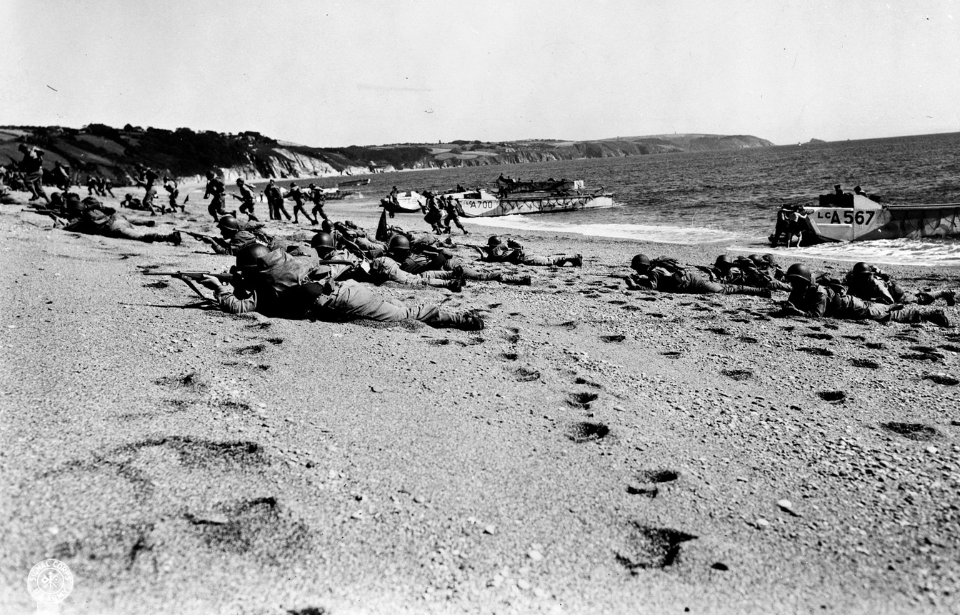An immense amount of preparation was involved in ensuring the success of D-Day. The Allies had to make sure they’d achieve the desired outcome, meaning they had to train their troops for anything they’d encounter along Normandy’s shores. One of the ways in which they aimed to prepare was with Exercise Tiger, a live-fire rehearsal that wound up being a fatal disaster, with the loss of hundreds of Allied servicemen.
Preparing for Exercise Tiger
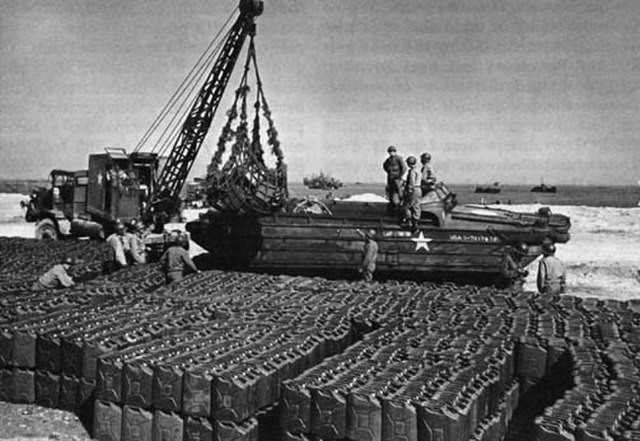
In late-1943, in the lead up to D-Day, the British government began planning practice exercises for those who’d be involved in the landings. Officials took over Slapton Sands, in Devon, as it closely resembled Utah Beach, where the American forces would land, with support from British naval bombardments; its gravel-strewn coast was followed by a strip of land, which itself was adjacent to a lake.
To ensure the safety of British citizens, the 3,000 residents living in the area were evacuated, after which the beach was covered in mines, concrete obstacles and barbed wire. Several vessels were also brought in to provide protection: three motor torpedo boats, four O-class destroyers and two motor gun boats. Three additional MBTs were stationed near Cherbourg, where German E-boats were based.
Nine tank landing ships (LSTs) were brought in for the live-fire rehearsal landings, which would see the participation of 30,000 Allied troops. While attempts were made to conduct this large gathering in secret, the Germans still gained some intelligence. The Luftwaffe sent reconnaissance aircraft over the area, while radio transmissions were intercepted. While they weren’t fully certain what the Allies were up to, they knew it was something big.
Exercise Tiger results in live-fire casualties
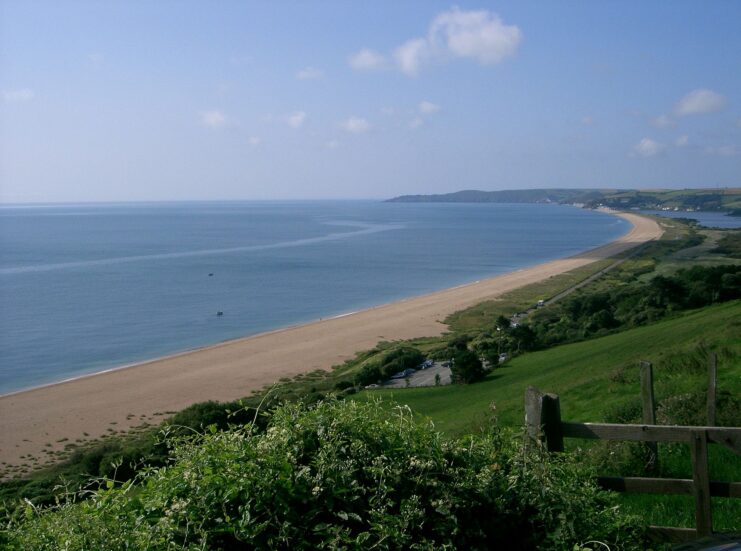
The first phase of Exercise Tiger, from April 22-25, 1944, centered around embarkation and marshaling drills, with the second occurring on the 26th. The first wave of troops boarded their LSTs for a simulated journey across the English Channel, with an order to arrive at Slapton Sands by first light the following day.
This phase would see them faced with a live-fire scenario, as Gen. Dwight D. Eisenhower, Supreme Allied Commander, wanted the servicemen to be aware of what they’d face when D-Day arrived. This meant they’d be faced with naval bombardments from ships operated by U Force.
While the initial H-hour was scheduled for 7:30 AM, this was pushed back an hour by US Adm. Don Moon. Unfortunately, some of the LSTs didn’t get the message and arrived at Slapton Sands’ shores at the original time, where they came under fire. While exact totals aren’t known, rumor says around 450 individuals lost their lives in the bombardment.
Commencement of the Battle of Lyme Bay
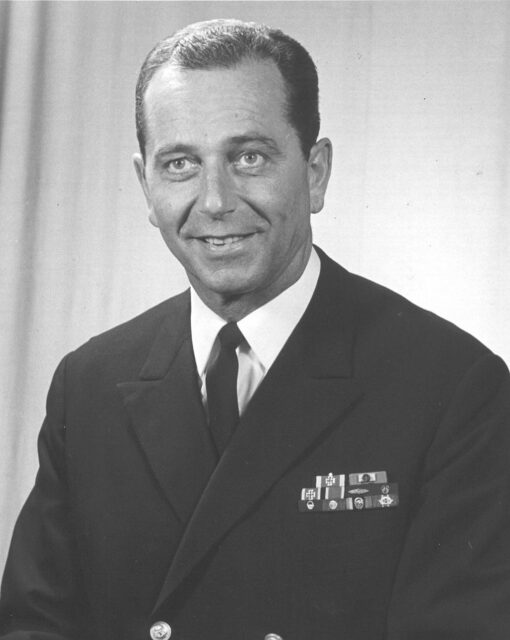
Shortly after midnight on April 28, 1944, nine E-boats with 5. S-Boot Flotille, under the command of Korvettenkapitän Bernd Klug, departed Cherbourg for patrols in the English Channel. Stationed there was Convoy T-4, made up of eight LSTs carrying military vehicles and fully-equipped servicemen.
At approximately 1:30 AM, Klug spotted the silhouettes of the Allied LSTs and split six of his E-boats into groups of two: Rotte 1 consisted of S-100 and S-143, Rotte 2 was made up of S-140 and S-142, and Rotte 3 featured S-136 and S-138. The remaining E-boats only entered the fight upon seeing flares and tracer rounds.
While two British vessels were meant to be watching over Convoy T-4, only one, the HMS Azalea (K25), was present, as the HMS Scimitar (H21) was in Plymouth undergoing repairs. While a replacement ship, the HMS Saladin, was dispatched, she hadn’t yet made it to the area.
Azalea would later fall under scrutiny for leading the LSTs in a straight line, a rather ineffective method of transiting potentially hostile waters.
The German assault takes out four Allied vessels
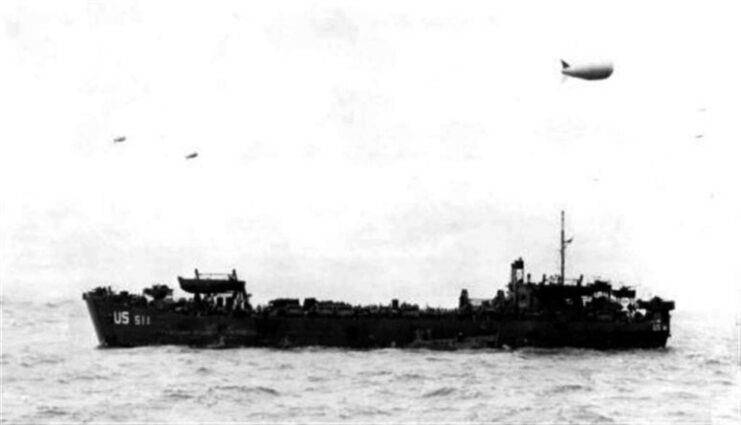
S-100 and S-143 were almost immediately taken out of the action by a collision, which saw the former’s superstructure suffer damage. The other vessels, however, inflicted a lot of destruction.
The USS LST-289 went up in flames after a torpedo struck her stern, resulting in the loss of 13 personnel. However, the vessel made it back to shore. The USS LST-507 caught fire following a torpedo hit, resulting in the deaths of 202 American servicemen. The USS LST-511 was struck by friendly fire, with 18 personnel being injured, while the USS LST-531 was hit with two torpedoes, resulting in a massive explosion that killed 424 US Army and Navy service members.
The surviving Allied vessels fired back at the Germans, and the engagement came to an end at around 3:30 AM, some two hours after it was initiated.
The E-boat attack on Exercise Tiger’s fleet caused severe casualties
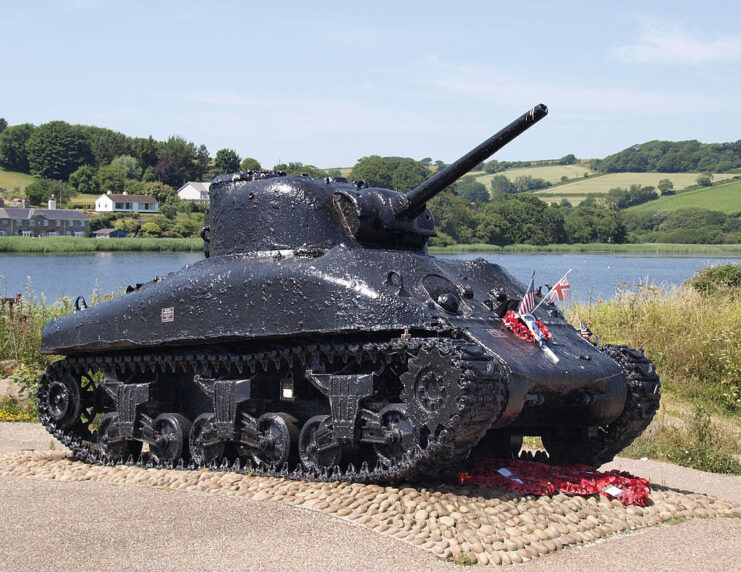
While the casualties suffered during the first part of Exercise Tiger were high, those suffered as a result of the E-boat attack were even greater. While exact estimates are unknown, due to the overall secrecy surrounding the rehearsal’s failures, most of the figures released following the Second World War put the total at over 700. The most widely-accepted number is 749, made up of 551 US Army and 198 US Navy personnel.
The majority of those who lost their lives did so after their vessels were hit by enemy torpedoes. Those who drowned did so as a result of not properly donning their life jackets, as they’d never been instructed on how to wear them. Given they were wearing heavy backpacks, the majority wore the vests around their waists, meaning the weight of their kit flipped them over in the water.
Anyone who did manage to stay above the surface succumbed to hypothermia, given the cold water temperatures.
Raising the ire of Dwight D. Eisenhower
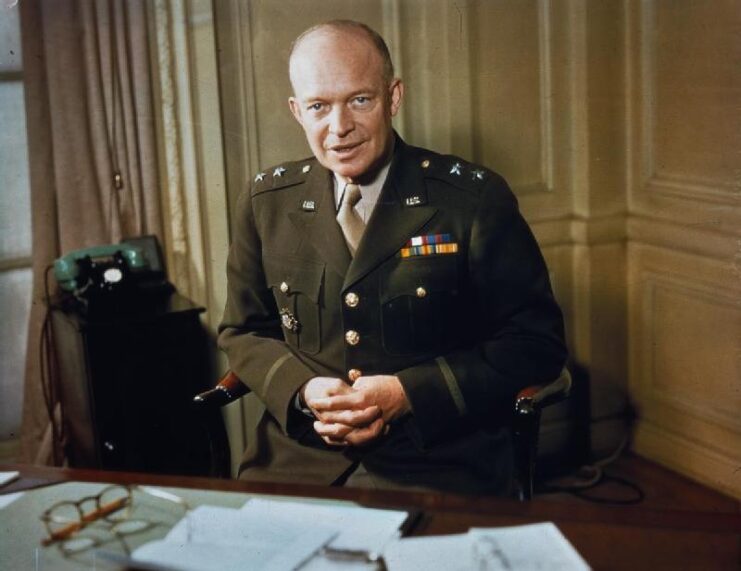
Exercise Tiger wound up being the deadliest training incident involving the US military during the Second World War. Dwight D. Eisenhower learned of the disastrous attack on April 29, 1944, and he was enraged over what he was told. He became irate upon learning that the convoy had been traveling in a straight line, as opposed to a much more safer zigzag pattern, which likely played a role in the significant loss of Allied vessels and lives.
The E-boat attack also indicated to Eisenhower that the Germans were aware that the Allies were building up a large force in the United Kingdom, likely for a large-scale attack. This was made worse by the fact that 10 American servicemen with knowledge of D-Day were missing.
The 10 men, all members of the 1st Engineer Special Brigade, knew when and where the Americans would be landing on Utah Beach and Omaha Beach, and they had knowledge of the DUKWs that would transport the rangers to Pointe du Hoc. Unsure if they’d died in the assault, Eisenhower almost called off the Normandy landings; he ordered that the individuals be found, along with any and all documentation they were carrying.
Changes were made to the D-Day landings
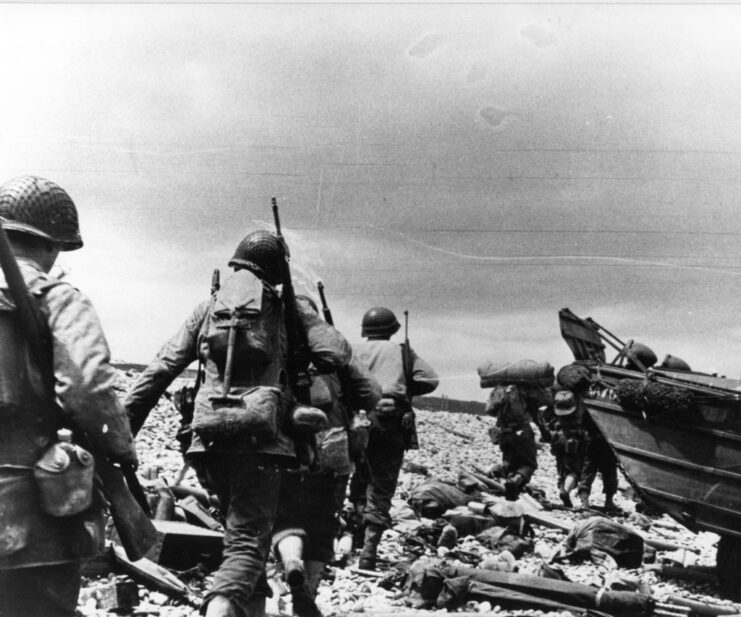
While Exercise Tiger may have resulted in the deaths of over 700 Allied servicemen, the immense loss of life was not in vain. The issues that caused the E-boat attack to be as disastrous as it was were blatantly apparent, meaning those leading D-Day were able to put in place effective remedies.
As aforementioned, a large portion of the casualties were caused by the servicemen not being trained on how to properly put on their life vests. To ensure this wouldn’t be a problem come June 1944, better training was enacted. On top of this, several small boats were organized to rescue anyone who became stranded in the water off the coast of Normandy.
More from us: ‘Gilligan’s Island’ Star Russell Johnson Was a Bombardier During the Second World War
The biggest adjustment was related to the Allies’ radio frequencies. The primary reason the British vessels were out of place that night was because of radio problems. These issues were also to blame for the LSTs being unable to pick up the E-boats’ presence. By the time D-Day occurred, the radio frequencies used by the Allies were standardized.
